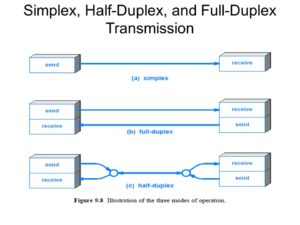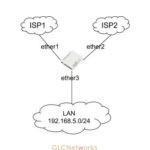When we talk about communication, there are always 2 parties involved: TX (transmitter, the one who send signal/information) and RX (receiver, the one who receive signal/information). Simplex, half-duplex, full-duplex.
In this article, we will be discussing about types of communication between TX and RX. they are: simplex, half-duplex, full-duplex. these terms are fundamental terminologies which network / telco engineers need to know.
Between TX and RX there is a media that is used to deliver signal. channel could be physical or logical, could be wired or wireless. this media later on is called communication channel.
Simplex means one way communication. this happens because the communication channel is only used by TX and RX is the passive side which only receive information. example: broadcast radio/tv, streaming.
Duplex means two-way communication, so both parties are actively send and receive signal. duplex itself is divided into 2 categories:
- Half-duplex: meaning 2-way communication where each party need to take turn for sending signals. both parties cannot send and receive at the same time because usually they only have single communication channel.
its pretty much like a single narrow bridge that connects two wide road. every single time, only one vehicle can cross the bridge, therefore others must wait for their turn.
example: wireless communication (wifi, handy-talkie), ethernet HUB, coaxial cable communication - Full-duplex: this is 2-way communication where each party can send and receive at the same time. this happens because they use multiple communication channel.
example: wireless communication (2G GSM), ethernet switch, telephone

well.. i had a wifi in my place where i can do video-call over skype where i can talk and hear at the same time. so why do you put wifi as half-duplex?
This is a very good question. Wifi is defined by IEEE with code of 802.11. And based on the standard, the way wifi works is by using one channel (frequency) only. the same channel is used both for TX and RX. so naturally, devices will use the channel by taking turn, and this process is fast. That’s why, when you do a skype communication, it works very smooth like full-duplex.
right.. but is there any scalability issue on total number of wireless clients connected to an AP and all of them communicating at the same time?
unlike the true-full duplex communication that has multiple communication channel. half-duplex performance will drop dramatically as the total number of client is increased. therefore, its a good practice to limit the total number of wifi clients that connect to an AP.
ok so we are aware now that wifi is half-duplex, but why GSM connection is said to be full-duplex?
Its simply because GSM uses multiple channel for communication. in GSM, when a phone rings, it uses different frequency for uplink and downlink. therefore, we can consider that as a full-duplex communication.
i see.. so this also explains why fiber optic cables uses 2 wires?
yes. the 2 wires represents 2 communication channels: one for TX, another for RX.
If you still curious about wifi and GSM, just contact GLC for more info
thank you for reading the article 🙂
hope you understand Simplex, half-duplex, full-duplex








